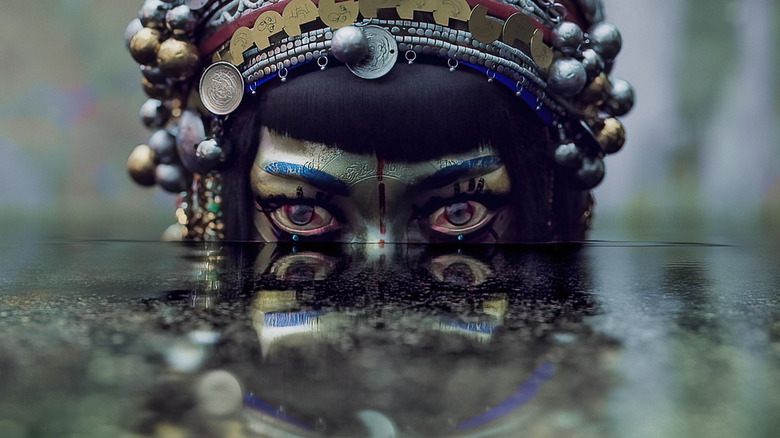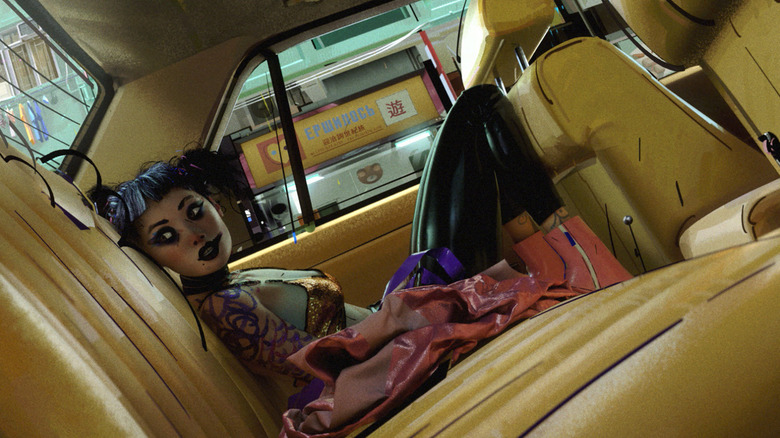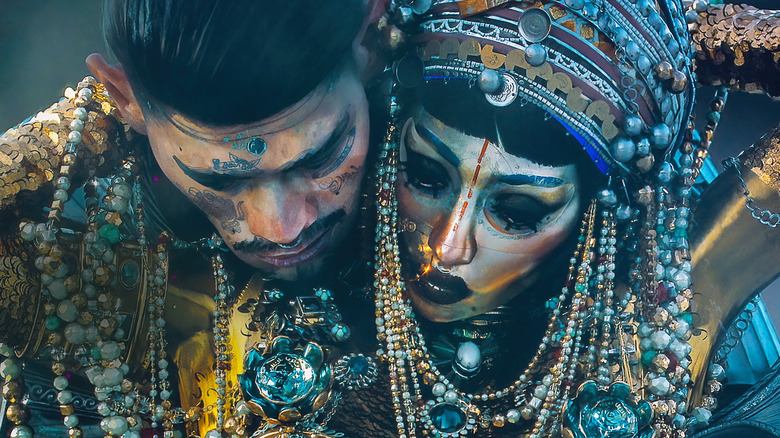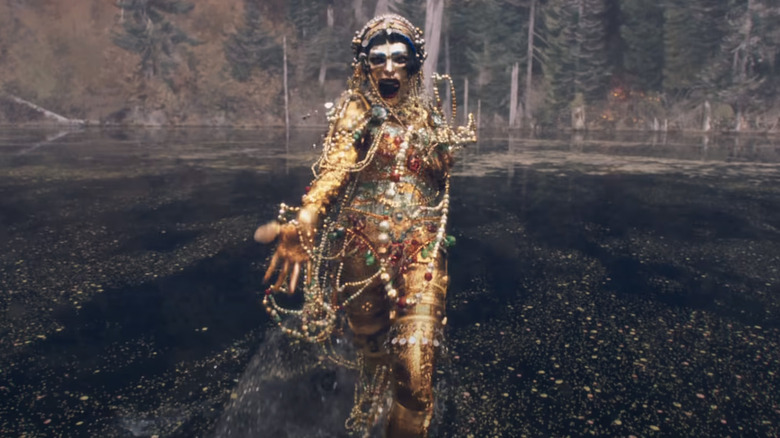Love, Death And Robots Director Alberto Mielgo Talks About His Stunning New Short, Jibaro [Interview]
Artist, animator, and director Alberto Mielgo just wants people to take animation seriously. Mielgo has won Emmys for his short "The Witness" from the first season of "Love, Death + Robots," and just this year won the Academy Award for Best Animated Short for his film "The Windshield Wiper." Mielgo took the stage at the Oscars to plead with audiences to give adult animation a chance, because it's an art form deserving of love and attention. Now Mielgo is back with another entry in "Love, Death and Robots" season 3, and he's upping the ante. If "The Witness" was a groundbreaking piece of animation, his new short, "Jibaro," feels world-breaking.
I had the opportunity to chat via Zoom with the Spanish creative, and he shared his hope for the future of animation and his inspiration for the surreal and slightly unnatural natural beauty of "Jibaro." You can check out the short yourself right now, since the third season of "Love Death + Robots" arrived on Netflix today.
This interview has been lightly edited for clarity.
'It's so organic and so rich that you get lost'
"Jibaro" is completely different from your first "Love Death + Robots" short, "The Witness." What pushed you to move from an urban sci-fi setting to a more mythology-inspired natural one?
Well, I always wanted to do something in nature, which is way more organic, as you very well phrase it. Most of my films, they were like urban landscapes. And in this case, I wanted to do an homage to nature, the sound of nature that's very, very incredible, and also the visuals and how the light is hitting the objects inside of a forest. It's very challenging because it's organic ... by the way, I have a huge trouble usually painting nature. I find that I get very lost when I am trying to paint a tree and then I do my strokes. Then when I come back to the leaf, it's like, "Oh my God, what leaf I was looking at?" Because it's so organic and so rich that you get lost.
When you are seeing a building, it's very easy to say, "Okay, I'm painting the fourth floor," right? Or at least it's easier for me. So it was very much like an artistic challenge, I suppose. And I love nature. I love the world and I wanted to depict it as I did in "Jibaro." That's basically what I wanted to do.
'A lot of the shots that we have, not all of them, they're basically like a painting'
I've never seen anything quite like this short. Can you explain to me how you mixed 3D and 2D animation technology to make it look the way it does?
To be honest, there is not much to explain, except that depending on the shot, I choose one or another way of approaching [it]. The film is essentially a 3D film. A lot of the shots that we have, not all of them, they're basically like a painting. Some others, we actually built a whole forest and we lighted it as we usually do in 3D. But there is a lot of 2D also in post-production and the look of the characters is very much simplified, even though they look realistic because the physics of light are correct in terms of painting and in rendering. But they're pretty much more simple than, for example, like hyper-realistic 3D rendering. I tend to remove details that we don't need because I wanted to make a better and more pleasant experience for the eye.
'We are just basically trying to please our audience, the people that love our stuff'
Your animation work is so experimental and boundary-pushing. Where do you hope the future of animation will go?
Beyond. Just beyond that. Or not. There's no need to actually push the technique and the boundaries, just for the sake of pushing the technique and the boundaries. I don't do it because of that. I don't consider that my stuff is experimental. It's just basically the technique and the look is serving the story. That's the most important thing for me. The future of animation ... we had adult animation for the longest time, actually. I'm not sure if you're familiar, but animation, it started basically for adults, like Tex Avery's stuff, it was pretty rough. Mickey Mouse was sort of a sketchy character in the beginning, but then we had this very sophisticated and successful formula that Disney, Pixar later on, they sort of brought. It worked and it still is working really well, But all of a sudden, it created this sort of monopoly where animation is very much for families.
So I hope that we, "Love Death + Robots," we actually grow adult animation again for mainstream. And I think that this is successful because A) people are loving it, B) we are the generation that actually grew up with comic books and with animation and with graphic materials, and I think that it's working very well because we are talking to the right people, basically. We are not trying to have like a zero to 99 [aged] audience. We are just basically trying to please our audience, the people that love our stuff. So I hope that the future of animation allows us to continue.
"Love, Death and Robots Vol. 3" is now streaming on Netflix.



